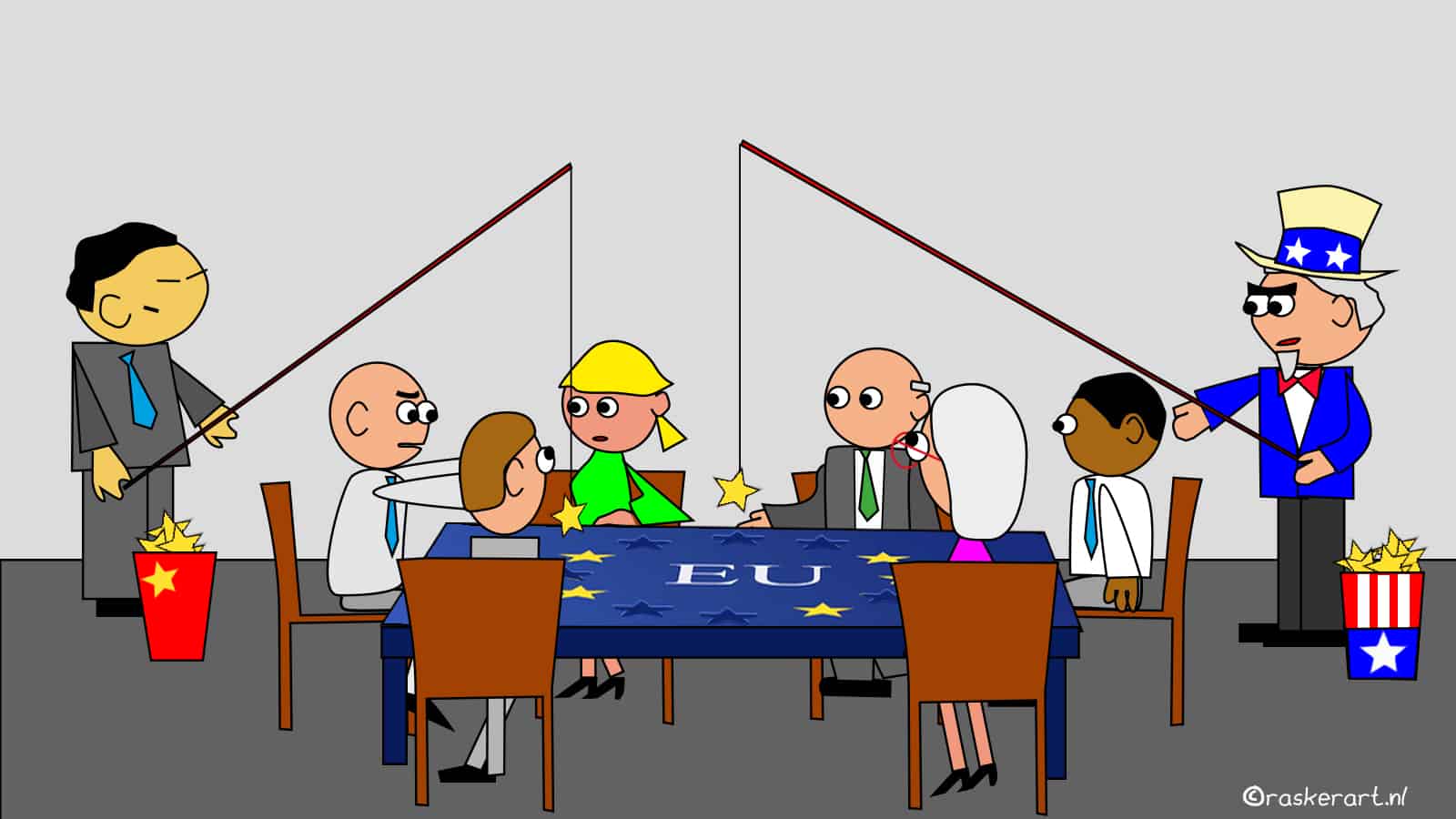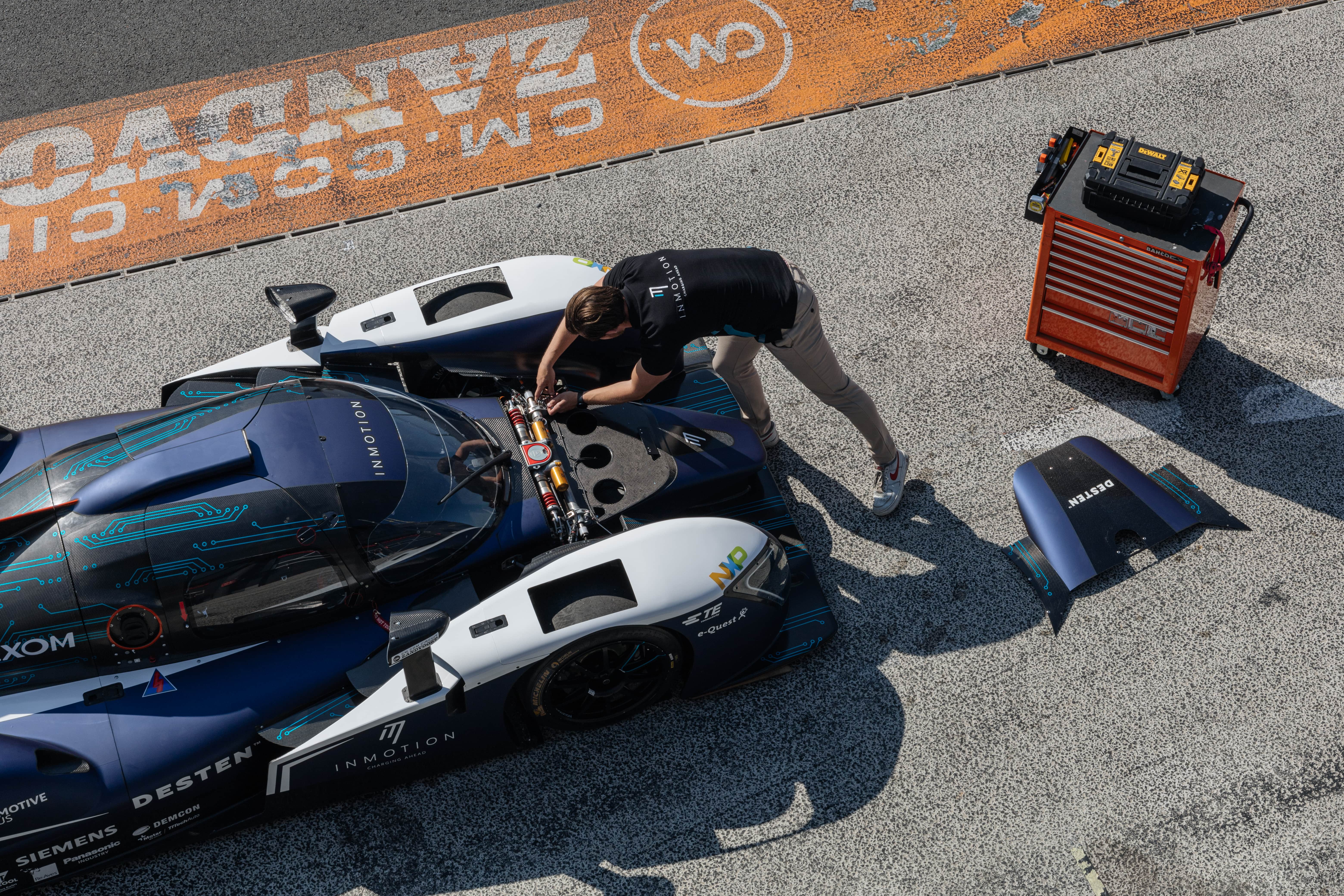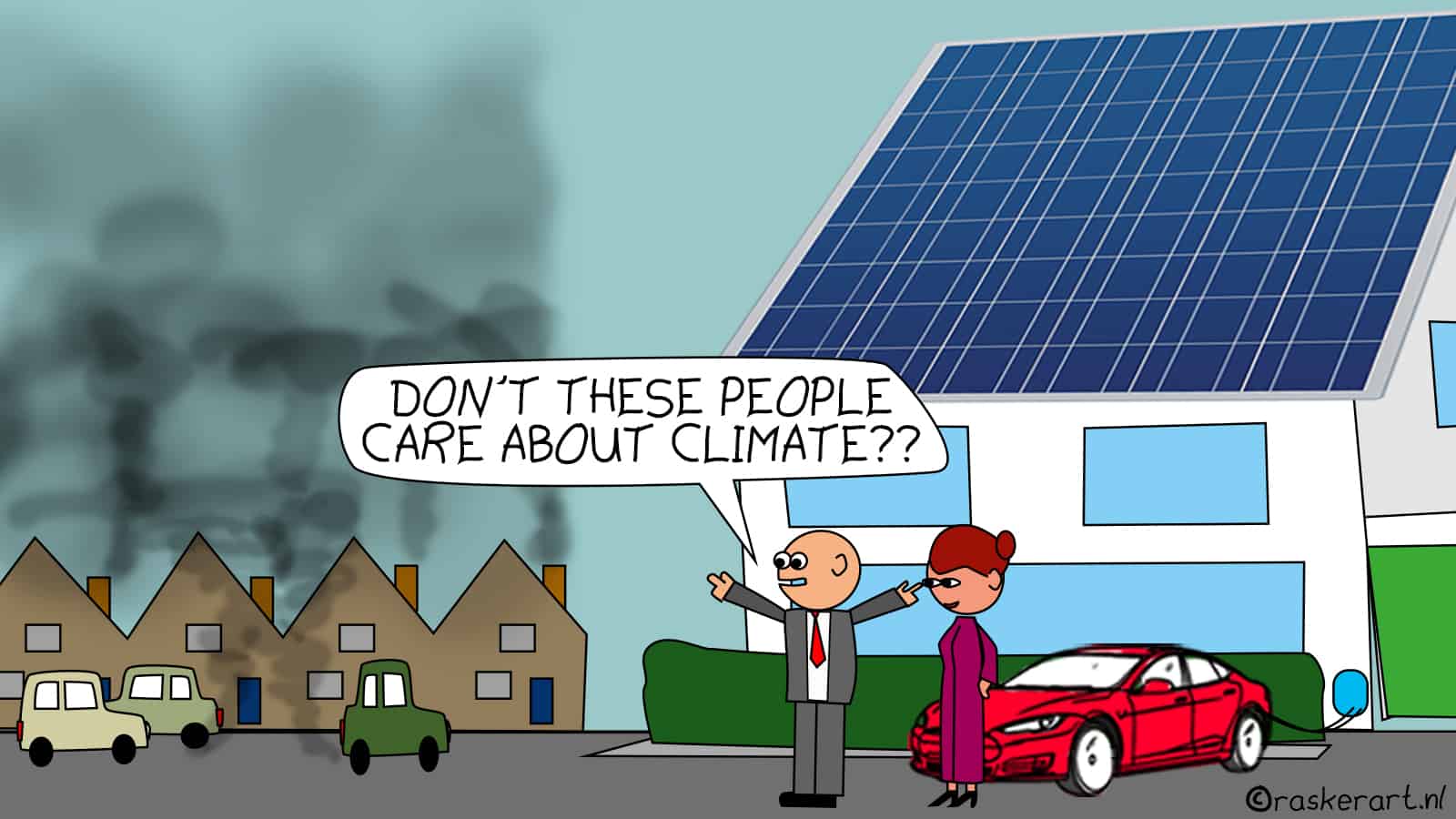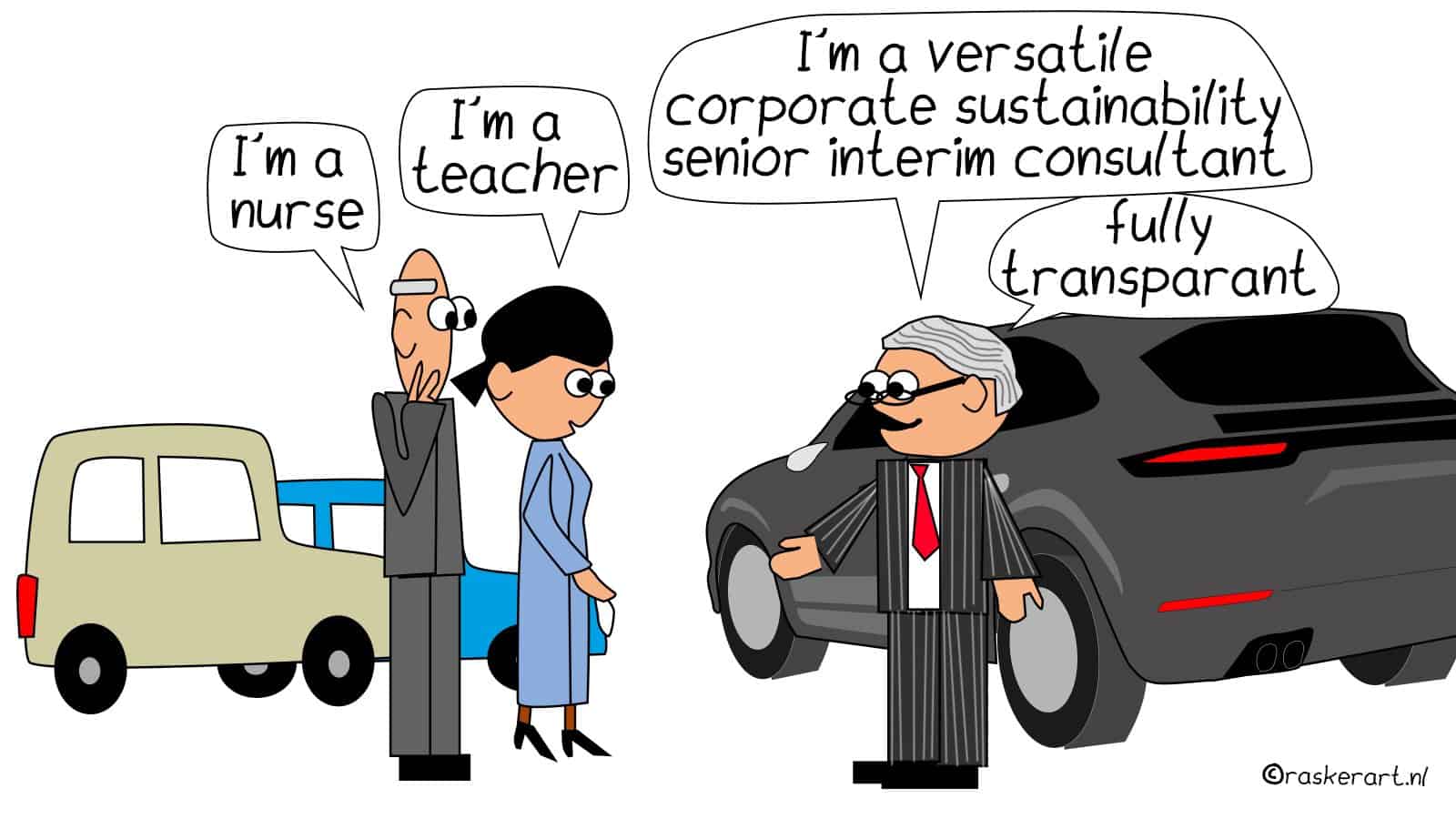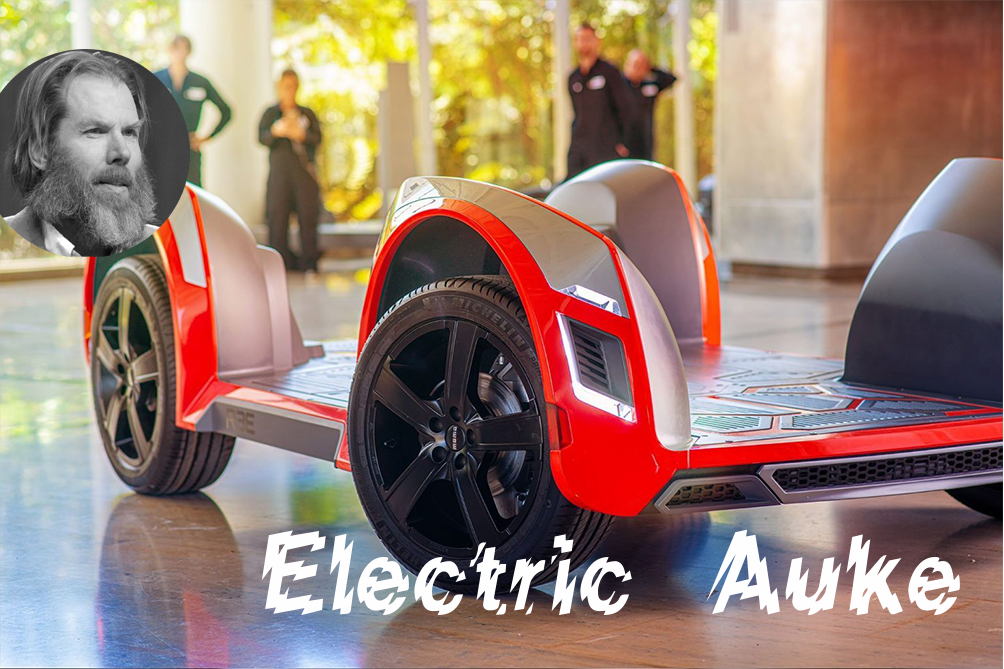
REE, from Israel, builds these kinds of boards on wheels. This is where engines, sensors, brakes, and steering systems are close to the wheels, so-called in-wheel engines. As a result, a platform is created where the rest of the car can be built around. “It’s super cool”, Auke begins enthusiastically. “On the chassis, close to the wheel are the electric motors that are attached to the wheels with a flexible clutch. This prevents the engine from moving up and down when driven over speed bumps, which – to put it simply – improves handling and comfort.”
Read more about the Israeli start-up here.
But Auke is most enthusiastic about the standalone modules REE works with. “All four wheels are separate modules. When your car breaks down, you go to a garage that replaces the complete module within fifteen minutes, like a sort of pit stop. They repair what is broken in the garage so that the module can be used again. Building with modules offers designers much more freedom when it comes to shapes and materials. You can choose which battery technology you want to use, what the chassis looks like and it’s very easy to connect it all to the platform. The remarkable thing about REE is that they are the first ones that appear to be getting through to serious customers. If they succeed, it’s going to completely change the way we build cars.”

Aerodynamic combination between tricycle and recumbent bike
A few years ago Auke teamed up with a number of Rotterdam automotive students to try to design a sustainable car. “We had to take so many things into account, it was a difficult undertaking. The car never got anywhere, but it would have been a lot easier with a platform like REE.”
Auke won’t take the trouble to design his own car anymore. Moreover, he would approach it differently and make everything even lighter and more aerodynamic if he did. “Cars take up an awful lot of space, which is not necessary at all. I would make a kind of a cross between a tricycle and a recumbent bike, just for transporting one person. Ultra-light and aerodynamic, so it doesn’t take a lot of energy to drive. Having a platform gives you the freedom to think about it”.
More competition in the market
This makes it easier for manufacturers to enter the automotive industry, according to Auke. “Because traditionally, building a car is a complex process. It requires a supply chain where everyone has to be good friends. The right parts have to arrive at the right place exactly on time, and scaling up production entails a substantial investment. When Elon Musk founded Tesla, this was the first American car brand in almost 100 years. Musk said that the chances of success would be almost zero because that market is so difficult to tap into.”
A change is now underway thanks to platforms such as REE, Auke believes. “The level of expertise to be able to jump aboard is a lot lower, all you have to do is buy a platform like that and connect the rest to it.” Auke pauses for a moment. “Okay, so I’m making it sound pretty simple now because you also have to do crash tests. It really isn’t ready in just a couple of weeks, but the basis is already there.”
Internet model fosters innovation
“Look, Tesla develops everything in an integrated way. From powertrains to battery technology. They even make the software themselves. I don’t believe in that. Why should everything be in the hands of a single player? I’m an advocate of an open development model like the Internet,” Auke explains. This model is based on open technology, which any manufacturer can develop products with. In the same way that your router works not just on your own PC, but also on someone else’s one as well.
“It enables more people to address the same problem and benefit from each other’s solutions. It stimulates innovation because people specialize in solving a small part of the puzzle. There is more room for competition because no one is holding you back if you think you can do better. That’s what I also see happening in the automotive industry with these platforms; you won’t need the traditional industry as much, so new things will emerge at every level – from propulsion systems to battery technology.”
Cars as Lego blocks
Since manufacturers assemble cars like Lego blocks, any new developments happen at a much faster pace. Auke is firmly convinced of this. “Given that you don’t just pound out a complete car from the factory, but only the battery or the in-wheel engines, you can manufacture a lot more of them. The learning curve is therefore much greater. Because the more often you do something, the better you get at it and the more you learn from it.”
He compares this with the construction of a nuclear power plant. A large, expensive and time-consuming project. “As a result, very few nuclear power plants are being built and the technology is progressing very slowly. However, in recent years solar cells have become increasingly cheaper to manufacture, which has made the technology more accessible, and far more are being made. People are learning from this and the technology is advancing. This is also why solar cells have become so much more efficient in recent years. New versions follow each other in rapid succession and become better and better every time”.


